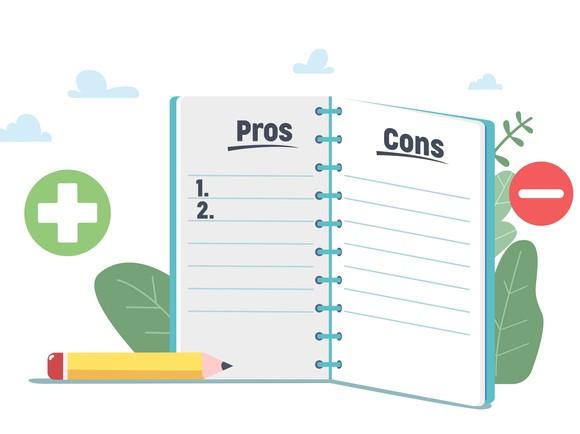About a third of American undergraduates are enrolled in public two-year institutions. Among those in two-year colleges such as the one I lead, two out of three are enrolled part-time. That means that most of our students are balancing their education with one or more competing interests: they’re parents, caregivers for elderly family members, working learners, returning learners, first-generation students or all the above. We have an obligation to meet the needs of these students and to do whatever we can to make them successful.
Sometimes, though, community colleges’ capabilities are not enough. We can’t be everything to everyone all the time, even if that’s the level of support we aspire to provide. Our students are working hard to complete their studies, often at night and the weekends. But sometimes we struggle with the internal resources to even understand all the challenges our students face – much less to meet those needs in the most effective way.
That doesn’t mean that we can just throw up our hands and give up on getting our students what they need. To deliver on our promise of improving the lives of our students and the vitality of the community, Rockland Community College, which I lead, has turned to collaboration.
- Could 2022 be the year of partnership models, and should you get involved?
- Chasing unicorns: can universities shape the edtech space to their advantage?
- Three tips for ‘unbundling’ an aspect of your university services
Effectively partnering to support students means taking a hard look at where you’re falling short or missing opportunities, identifying partners that share your goals and building student-centred solutions with them. And it means actively examining partnerships along the way – championing lessons from our successes and not being afraid to admit when these partnerships aren’t achieving their desired outcomes. Partnerships must produce more than goodwill or symbolic significance. They should lead to outcomes that advance a college’s mission in quantifiable ways.
Honest assessment
It’s difficult to admit as an institution where you aren’t delivering for students, but given our public mission, we must be self-aware and determined to do everything we can to support students. Sometimes, that means recognising where we need help. Finding the gaps in student experience requires us to step back, take a hard and honest look at where we are falling short and ask whether these are things we can reasonably solve internally, or if we need to find a partner that has the means, motivation and commitment to help us.
One of our critical gaps was accessibility. Many of our students work or are raising children – or both – while they’re enrolled. Many are too busy with jobs and family responsibilities to find time to connect with us during normal business hours when they had problems logging into our network or ran into other technology issues.
We knew we lacked the capacity to provide tech support at times that were convenient to our students. By partnering with a third-party provider, Ellucian, we can offer our students call centre tech support around the clock, seven days a week. This is an important resource to help our students stay on track – but one we wouldn’t have been able to build internally.
Dual-purpose partnerships, with students at the centre
Partnerships must be built with student needs at the centre, with organisations that share your values and goals. Too often, colleges miss opportunities to structure relationships with service providers in ways that not only benefit their students but advance our broader field. We can, instead, collaborate with the private sector to build, test and iterate solutions that will improve the learning experience for students beyond our campus.
For example: as a minority-serving institution, we seek to provide equitable educational experiences for all students. We know work experience can be incredibly valuable to students, but our learners often don’t have the luxury of taking unpaid internships. That’s one of the reasons we partnered with Lumen Learning to create a campus-based user testing centre. Our students will work as paid interns for Lumen’s product design team, where they will learn about the products, recruit peers, run tests and review data.
This new testing centre is designed to get feedback from students across dimensions of difference – Black, Hispanic, Indigenous and low-income learners – who traditionally haven’t had the opportunity to test new edtech products. And not only are our students gaining valuable job skills, they will also help Lumen develop edtech tools that better reflect the needs and experiences of a wider range of students.
And because completion – and the economic opportunities that come with it – is at the heart of our work, we’re structuring an experiment with online learning platform Course Hero. Together, we are testing how supplemental support for both teachers and students may help to scaffold learning and provide critical resources to students when and where they need it most. Our goal is to create a foundation of supplemental support, collaborative learning and innovation for teachers – which can then be shared with students and improve student access and outcomes.
Institutions of higher education are facing a world that’s growing ever more complex. They can’t lose sight of their responsibility to ensure that their students remain on track to finish their degrees and find careers and opportunities to improve their own lives and meet our country’s most pressing needs.
Keeping partnerships relevant through continuous improvement
For partnerships to be successful, there must be clarity around goals, monitoring along the way and a commitment to adjusting so that the collaboration remains robust and the outcomes for students continue to improve. For example, one of the significant benefits of our partnerships with edtech companies has been the co-creation of programmatic supports and regular strategy sessions to improve the quality of the interventions and enhancements. “One-size-fits-all” strategies are rarely successful because striking the right balance between institutional context and partner capacity is essential for effective student success outcomes.
Colleges and universities need to be honest with themselves about what they can and can’t do for their students. New technologies or economies of scale working across institutions allow third-party providers to provide resources that would otherwise be impossible or unaffordable. To support students, fix campus problems and solve some of today’s biggest challenges, it might be necessary to find some friends.
Michael A. Baston is president of Rockland Community College, US.
If you found this interesting and want advice and insight from academics and university staff delivered direct to your inbox each week, sign up for the THE Campus newsletter.




comment